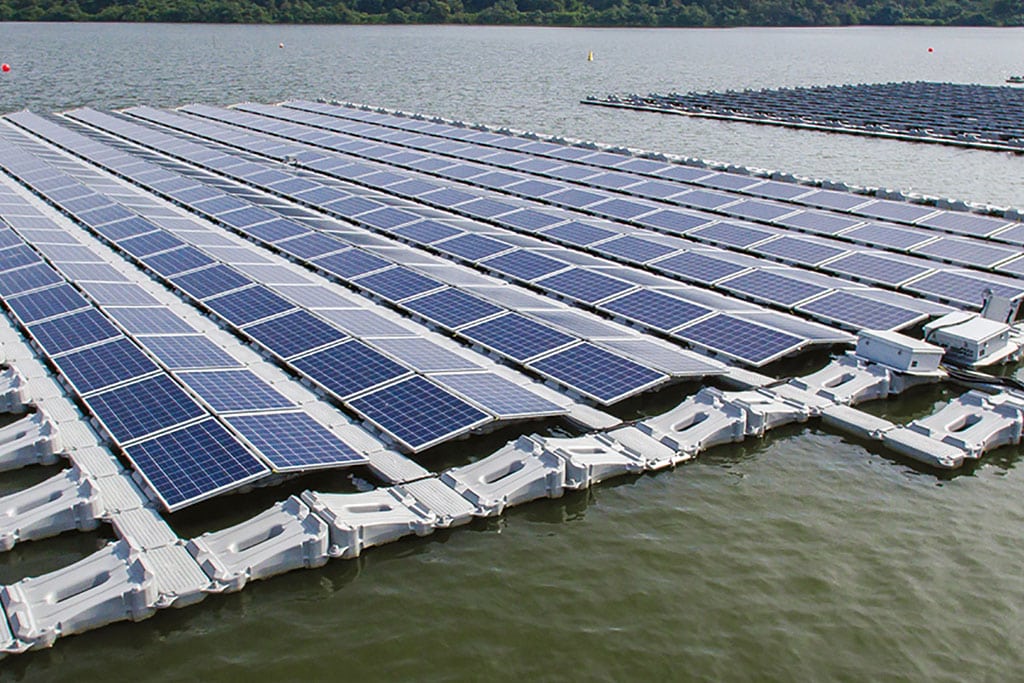Singapore has begun the construction of one of the world’s largest inland floating PV (photovoltaic) solar systems that are expected to be built on the Tengeh Reservoir. The PV system is going to be 60 MW and is also one of the first in the world to integrate green technology with water treatment. The PUB (Public Utilities Board) National Water Agency of Singapore gave an announcement recently that, Sembcorp Industries, one of its subsidiaries had begun construction on the world’s largest inland peak floating solar PV system on Tengeh Reservoir, on Singapore’s northern border with Malaysia. The 60MW floating solar plant will be integrated with PUB’s water treatment plants. It is expected to be completed and operational by 2021 and will generate enough clean energy sufficient to power PUB’s local water treatment plants, offsetting around 6% of its annual energy needs.
Also Read: US$28B Singapore to Kuala Lumpur high-speed rail link project to be delayed further.
The agreement to supply power to its own water treatment operations was made in May of 2020 when Sembcorp announced that it had signed a 25-year Power Purchase Agreement (PPA) for the power generated from one of the world’s largest inland floating PV system. Singapore is a sovereign island city-state that has a total land area of 724.2 squared kilometers and is heavily populated thus it does not have a lot of room for traditional renewable energy generating technologies making solar energy the country’s most viable renewable energy source. However, even with large-scale deployment of solar panels is difficult due to its dense urban landscape and limited available land.
The Tengeh Reservoir floating solar plant is also incorporating new innovations in floating solar PV design and construction. For example, according to PUB, “Every component of the system was carefully designed and selected based on Singapore’s climate conditions in order to maximize energy generation, minimize environmental and water quality impact, and be durable enough to fulfill a service lifespan of 25 years.” Double-glass solar PV modules were used instead of single-glass modules so as to enhance durability in a wet and humid environment. The PV modules are also supported by certified food-grade quality high-density polyethylene (HDPE) floats which are UV-resistant so as to prevent degradation from intense sunlight exposure.

